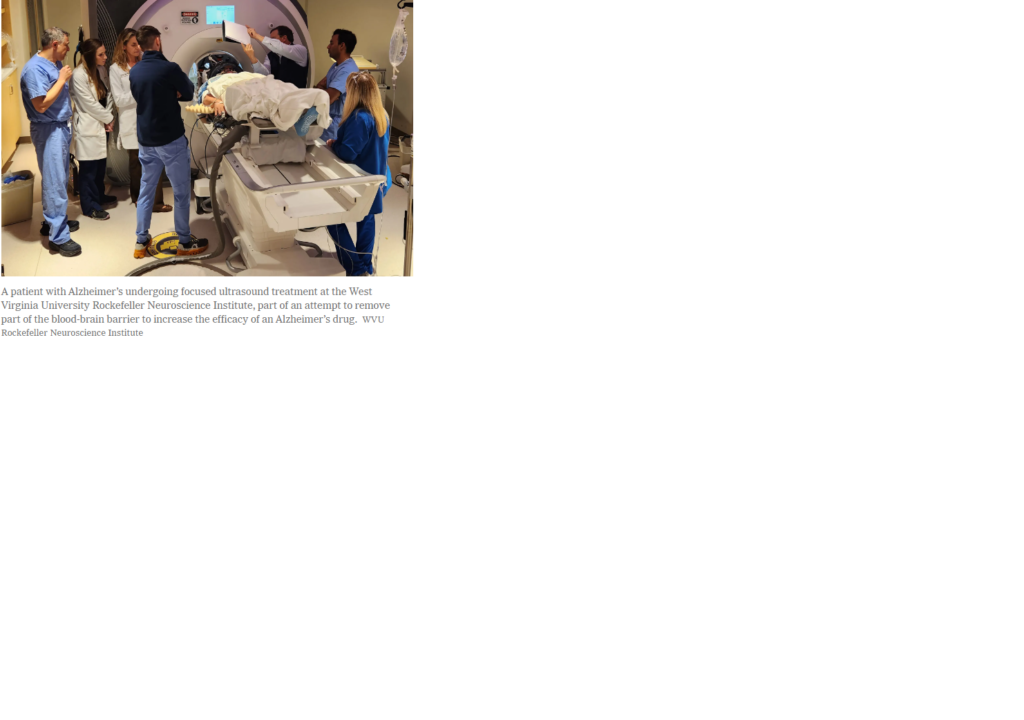Breaking Down Brain Barriers in the Battle Against Alzheimer’s!

Hold on to your thinking caps, folks! We’ve got some groundbreaking news that even your grandma would find mind-blowing. Brace yourselves because we’re diving into the wild world of Alzheimer’s disease, where science meets ultrasound in a brainy showdown.
Picture this: a team of brainiacs led by Dr. Ali Rezai from the West Virginia University Rockefeller Neuroscience Institute decided to play with ultrasound to crack open the elusive fortress guarding our brains – the blood-brain barrier (BBB). Yes, you heard it right, they’re using sound waves to break into the VIP area of our noggins.
In a daring first-in-human clinical trial, they enrolled three brave souls battling Alzheimer’s disease. The mission? To see if opening the BBB with focused ultrasound could let in the cavalry – a superhero drug called aducanumab, armed to the teeth to take down those pesky amyloid-beta plaques wreaking havoc in Alzheimer’s brains.
Now, you might wonder, what’s the BBB? Well, it’s like the bouncer at the brain’s club, making sure only the cool stuff gets in and keeping the riffraff out. But, and it’s a big but, sometimes it plays hard to get with therapeutic agents. That’s where ultrasound comes to the rescue, prying open the BBB and giving aducanumab the VIP pass it deserves.
Guess what? The trial’s a hit! The first three participants showed promising results. Amyloid-beta plaques were on the run, thanks to the aducanumab cavalry charging in through the ultrasound-opened BBB. Dr. Rezai and his squad are patting themselves on the back because it turns out this brainy heist is not just safe, but it’s also working its magic.
In the words of Dr. Rezai, “After six months of antibody treatment, we observed an average of 32% more reduction in amyloid-beta plaques in brain areas with BBB opening compared to areas with no such opening.” Now, that’s what we call a brain glow-up!
Hold tight because this is just the beginning. The team is revving up for the next phase of the clinical trial, aiming to turbocharge the amyloid-beta removal process even more. It’s like a brain spa day, but with science and ultrasound instead of cucumber slices.
And the cherry on top? This isn’t just about Alzheimer’s. The ultrasound saga has implications for treating other brain baddies like Parkinson’s disease, Huntington’s disease, ALS, brain tumors – you name it! So, grab your popcorn, folks, because the brain revolution is here, and it’s making waves with sound!
https://www.nejm.org/doi/10.1056/NEJMoa2308719




